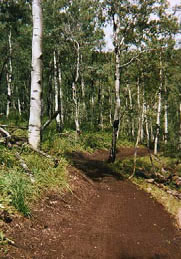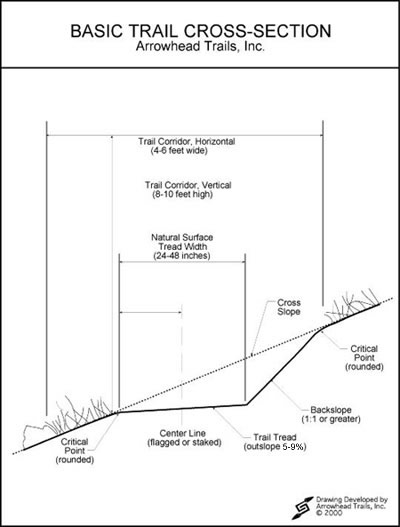Trail Specifications for Sustainable Multi-Use Trails
Trail Design Standards include:
-
 Align trails using the natural topography of the land with a rolling contoured
design.
Align trails using the natural topography of the land with a rolling contoured
design. - Align trails to ensure that water exits the trail tread often.
- Rolling grade dips should be the standard water drainage feature.
- Multi-use trails should be constructed with a 4-6 foot-wide trail tread.
- Singletrack trails should he constructed with an 18-24 inch-wide trail tread.
- The average maximum grade of the trail tread should not exceed 8%.
- The maximum grade of the trail tread should not exceed 12%.
- Trail grades should be checked with a clinometer.
- Back slopes should be constructed between a 1:1 and 2:1 ratio
- Trail tread outslopes should be 3-6%
- Trail tread outslopes should be checked with a digital level
- Adequate directional signage should be provided
Finished Trail Construction includes:
- Corridor clearing shall be confined to within 2' of trail and backslope edges.
- Lop and scatter all cut tree limbs and brush to a maximum height of 18". No debris may be left within 20' of trail.
- Excavation of full bench trail tread, backslope, shaping, outsloping, and drainage features.
- Maximum size of loose rock material to be left in trail shall not exceed 3". All rocks greater than 3" shall be placed on the down slope side of the trail.
- Woody material greater than 1/2" diameter shall be removed from the trail tread (i.e. stumps, logs, brush).
- Finish hand raking and grading of trail tread, backslopes, down slope spoils, and water diversion structures.
